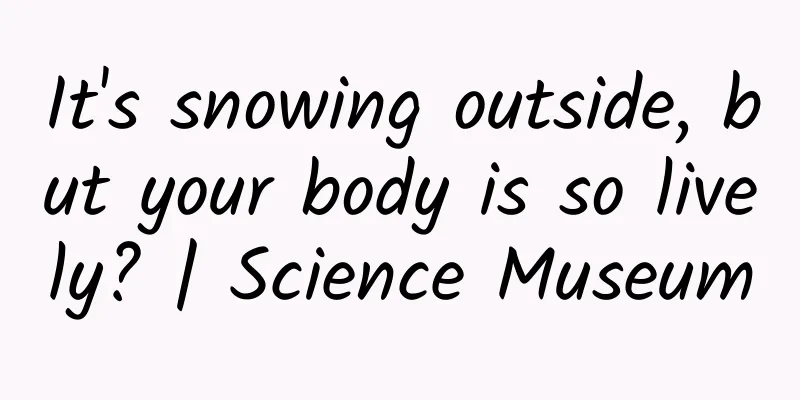Is the expanding universe really an illusion?

|
Traditionally, the standard model of cosmology holds that the universe began with a big bang, followed by continued expansion and cooling. However, a new study recently found that based on a clever mathematical trick, we can "zoom" the universe and the expansion may just be an illusion. Does this idea stand up to scrutiny? By Ethan Siegel Translation | Liu Hang
Back in the 1920s, two parallel developments paved the way for our modern understanding of the Universe. On the theoretical side, we could deduce that a Universe filled uniformly with matter and energy would not be static and stable, but would either expand or collapse, if general relativity held true. On the observational side, we began to be able to observe galaxies beyond the Milky Way and determine that (on average) the farther away they are from us, the faster they are moving away from us. Simply combining theory with observation, the concept of an expanding Universe was born, and it has stayed with us ever since. Our standard model of cosmology—which includes the Big Bang, cosmic inflation, the formation of cosmic structure, and dark matter and dark energy—is built on top of this model. But is an expanding Universe absolutely necessary, or are there other possibilities? Recently, an interesting new paper[1] has attracted some attention. Theoretical physicist Lucas Lombriser argues that by making some changes to the equations of general relativity, the expansion of the Universe can be made to "disappear." In his scenario, the observed expansion of the Universe is simply an illusion. But does this fit with what we know about science?
Physics Equivalence Sometimes we realize that there are multiple different ways of understanding the same phenomenon. If two ways are physically equivalent, then we know that there is no difference between them, and which one we choose is just a matter of personal preference. Taking optics as an example, you can describe light as waves (as Huygens did) or as rays (as Newton did), and in most experimental situations both descriptions lead to the same predictions.
The latter scenario in relativity suggests that the coordinate transformations commonly used by mathematicians may give us some inspiration. We may be more accustomed to thinking about coordinates in the way that René Descartes did about 400 years ago: the directions/dimensions are perpendicular to each other, and the coordinate axes have the same scale, that is, the Cartesian coordinate system we have all learned. But Cartesian coordinates aren't the only coordinate system that's useful. For example, if we're dealing with objects that have axial symmetry, we might prefer cylindrical coordinates; if we're dealing with objects that are symmetric about a central point, spherical coordinates might make more sense. If we're dealing with spacetime, in which the "time" dimension behaves fundamentally differently from the "space" dimension, then it's more convenient to use hyperbolic coordinates to relate space and time. The great thing about coordinates is that they are just a choice. As long as you don't change the fundamental physics behind the system, you are completely free to choose any coordinate system you like to describe anything in the Universe.
There is an obvious approach that we can try to apply to the expanding Universe. Traditionally, we note that distances in bound systems (such as nuclei, atoms, molecules, planets, and even star systems and galaxies) are constant over time; we can use them as "rulers" to measure distances very well at any given moment. When we apply this to the entire Universe, since we see distant (unbound) galaxies moving away from each other, we conclude that the Universe is expanding, and try to find a relationship for how the rate of expansion changes over time. So why not think in reverse and redefine these coordinates: keep the distances between (unbound) galaxies in the Universe fixed, but let our "ruler" and other bound structures shrink over time? This choice may seem rash, but in science, changing the way we look at a problem can reveal features that were not obvious in our original perspective, but become clear in our new one. The redefinition of coordinates is exciting—and that’s what Lombriser explores in his new paper. What conclusions might we draw about our biggest puzzles by taking this inverse perspective?
Unlike the traditional cosmological view, we can reconstruct the Universe as static and non-expanding, at the expense of mass, length, and time scales all changing and evolving. Since our goal is to keep the structure of the Universe constant, we can't have expanding, curved space (with growing density inhomogeneities in it), so these evolutionary effects need to be mirrored somewhere else. The mass scale will have to evolve with the evolution of spacetime, as will the distance scale and the time scale. They must co-evolve in a precise way so that when combined to describe the Universe, they constitute the "inverse" of the standard explanation. Another approach would be to keep the structure of the Universe constant, as well as the mass scale, length scale, and time scale, but at the cost of having the fundamental constants of the Universe co-evolve in a certain way so that all the dynamics of the Universe are "encoded" on them. You might be tempted to object to both of these statements because our traditional view makes more intuitive sense, but as we mentioned before, if the math is the same and there are no observable differences between the predictions of either view, then they are both equally valid when trying to apply them to the Universe. What would a non-expanding universe look like? Want to explain the redshift in the Universe? In this new image, you can explain it in a different way. In the standard image: Atoms undergo atomic transitions; In the laboratory, the only observation we can make is to measure the observed wavelength of the received photons and compare it to the wavelength of the laboratory photons. There is the possibility that there is an evolution of the mass of the electron, an evolution of Planck's constant (ℏ), and an evolution of the (dimensionless) fine structure constant (or some combination of constants). The redshift we measure for distant photons could be due to a number of different factors that are indistinguishable from one another. Remarkably, these multiple factors, appropriately extended, will give the same kind of redshift to gravitational waves.
In the same way, we can reconstruct how structure grows in the Universe. Typically, in the standard picture, we start with a slightly overdense region of space, a region with a density slightly above the average density of the Universe. Then over time: The gravitational disturbance in this area will attract more matter than the surrounding areas;
If we take this approach, we can try to reinterpret some currently unexplained features of our Universe, no matter how unnatural it may seem. For example, there is the problem of the "cosmological constant," which for some reason seems to fill space with a field with an intrinsic constant energy density: an energy density that does not dilute or change as the Universe expands. This question was not important long ago, but it is important now, because the matter density has diluted below some critical threshold. We do not know why space has this non-zero energy density, nor why it takes on values consistent with the dark energy we observe. In the standard picture, this is an unexplained mystery. However, in this reconstruction, if the mass scale and the distance scale change according to the new construction, there is a relationship between the value of the cosmological constant and the inverse of the Planck length squared. And the Planck length changes as the Universe evolves, and its evolution is from the observer's perspective: the value we observe now is exactly the value observed at this moment. If time, mass, and length all evolve together, then the so-called "coincidence problem" in cosmology is eliminated. Any observer will observe the effective cosmological constant at their "present moment", which is important because their "present moment" is evolving with cosmic time.
In this case, they can reinterpret dark matter as a geometric effect of particle masses increasing in a convergent manner at early times. They can also reinterpret dark energy as a geometric effect of particle masses increasing in a divergent manner at late times. What is exciting is the different ways to reinterpret dark matter - where the expansion of the universe is reinterpreted as the result of the interaction of the axion scalar field (as a known dark matter candidate particle) with the field. The coupling of the axion scalar field with other fields introduces CP violation - one of the key ingredients to produce matter-antimatter asymmetry in our Universe. The illusion of reality Thinking about the problem in this way leads to many interesting potential consequences, and we should not discourage anyone from this type of mathematical exploration at this early "sandbox" stage. Someday, such ideas could form part of the theoretical foundation for going beyond the currently accepted standard model of cosmology. However, even if this is interesting from a purely general relativity perspective, most modern cosmologists don't bother considering these issues, because even if they could experimentally observe and prove that these reconstructions are acceptable on a cosmic scale, it would completely contradict what we already observe on Earth. When hydrogen atoms are formed, the spins of electrons and protons are equally likely to be parallel or antiparallel. If they are antiparallel, no further transitions can occur, but if they are parallel, they can quantum tunnel into lower energy states, emitting photons of a specific wavelength over very long timescales. Such transitions can be measured with an accuracy of one part per trillion and remain constant for decades, constraining Planck's constant, the speed of light, the mass of the electron, and their combination. Image credit: Tiltec/Wikimedia Commons For example, consider the following view: Changes in the properties of elementary particles, such as mass, charge, length or lifetime, The magnetic moment of the electron was measured with extremely high precision in both 2007 and 2022, and the difference between them was less than one part in ten trillion (the limit of the accuracy of the early measurements), which showed that the fine structure constant had not changed. A striking feature of the standard view of the Universe is that all the laws of physics that apply here on Earth apply everywhere and at every moment in the Universe throughout its history. A cosmological view that fails here on Earth is far less interesting than one that succeeds everywhere and everywhere. If the traditional view of the expanding Universe agrees with physics here on Earth, and an alternative view that works well for the larger Universe but fails here on Earth, then we can’t say that the expanding Universe is an illusion. After all, physics here on Earth is the most real, most precisely measured, and most rigorously tested anchor point for us. This is not to say that the journals that publish this kind of speculative, exploratory research—such as Classical and Quantum Gravity, the Journal of High Energy Physics, or the Journal of Cosmology and Cosmological Particle Physics—are not reputable and high quality; in fact, they are very prestigious. They are specialized journals in specific fields—more interested in theoretical explorations of the early universe than in the analysis and understanding of experiments. By all means, continue to explore realistic alternatives to standard cosmology (and particle physics). But don't pretend that throwing away all reality is a viable option. The only "illusion" here is the reality we observe and measure, and this is extremely important when it comes to understanding our universe. References [1] Lucas Lombriser 2023 Class. Quantum Grav. 40 155005, DOI: https://doi.org/10.1088/1361-6382/acdb41 [2] Phys. Rev. Lett. 130, 071801 DOI: https://doi.org/10.1103/PhysRevLett.130.071801 About the Author
Ethan Siegel, Could the expanding Universe truly be a mirage? Produced by: Science Popularization China
1. Go to the "Featured Column" at the bottom of the menu of the "Fanpu" WeChat public account to read a series of popular science articles on different topics. 2. Fanpu provides a function to search articles by month. Follow the official account and reply with the four-digit year + month, such as "1903", to get the article index for March 2019, and so on. Copyright statement: Personal forwarding is welcome. Any form of media or organization is not allowed to reprint or excerpt without authorization. For reprint authorization, please contact the backstage of the "Fanpu" WeChat public account. |
>>: How does the brain recognize people by their voice?
Recommend
1 billion views in 100 languages in 31 years, how does content giant TED operate?
TED, a non-profit organization founded in 1984, i...
Why there are no promotional ads in your WeChat Moments
As soon as the WeChat Moments advertisement came ...
Interstellar "Spring Cleanup": A Guide to Cleaning Up Space Junk
Three years ago, astronauts on the International ...
Mengniu breakfast milk brand communication plan!
Recently, I found a social communication plan for...
How to avoid "playing the lute to a cow" in traffic promotion?
Who are you asking for traffic from? In ancient t...
Is toothpaste afraid of water? Will it be ineffective if you dip it in water?
There is a long-standing topic on the Internet: s...
How to optimize Baidu drop-down box? How much does it cost to optimize a drop-down box?
Baidu drop-down box: It is mainly used when searc...
How to cook a chicken with bare hands? Beat the chicken for 13 hours and 37 minutes
As a good friend of mankind, chickens are of grea...
In the K12 education industry, how to expand into lower-tier cities and acquire customers?
As the concept of sinking begins to penetrate int...
Endurance is no longer the primary pain point in the new energy vehicle industry. 500km will become the starting point for a new round of competition among automakers.
In recent years, the new energy vehicle industry ...
How much can you borrow for the first time with Youqianhua? What are the application requirements for Youqianhua?
"Youqianhua" is the original credit ser...
What is so great about the Y-20?
Mixed Knowledge Specially designed to cure confus...
Guoxuan High-tech is transferring its lithium battery technology to India. Isn’t it afraid of being legally “robbed” like vivo?
Industrial transfer has been a hot word in recent...
2018 China New Media Trend Report! (Attached with download)
Growth is an eternal topic Half is fire, half is ...
Don't rush to take a picture of a bug on your face! The unique skills of the fart beetle, the "disfigurement" of chemical weapons is too scary
Recently, there was a news report that a citizen ...









